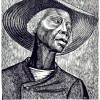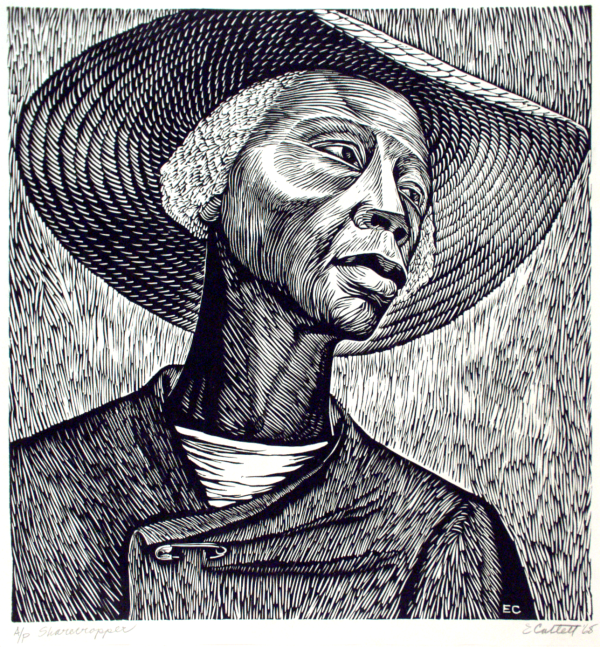Artmaking as Working
| Grade | 6th Grade, 7th Grade, 8th Grade | Class | Length of Lesson | Approximately 4 - 5 (40 - minute sessions) |
| Lesson Title | Artmaking as Working |
| Unit Title | Artmaking as Message: Elizabeth Catlett |
| Unit Compelling Question | What is a message? |
| Historical Context: WHO: Elizabeth Catlett WHEN: 1912 - 2012 WHAT: American Printmaker, Sculptor, and Educator FAMOUS FOR: Artistic explorations of race, class, and expression of her own African American female identity. IN HER OWN WORDS: ARTIST'S HISTORY: IOWA CONNECTIONS: ARTIST'S WORK: ARTIST'S WORLD: |
|
| Lesson Supporting Question | |
| Lesson Overview | Students will learn about the life and influence of artist Elizabeth Catlett, who was the first black woman to receive an MFA and her legacy in Iowa. Using Catlett’s artwork, Sharecropper, 1968, as inspiration, students will create a linoleum print using white paper and black ink that represents the concept of work and what it means to them. Then, students will write an artist statement that describes the work and steps they took to create the print as well as the personal meaning behind the image. |
| Primary Sources Used |
|
| Resources Needed | Other Notable Artworks: Learning, 1948 Mother and Child, 1956 Red Leaves, 1978 Singing Their Songs, 1992 Online Resources (Used at Instructor's Discretion): VIDEO: Elizabeth Catlett Visionary Project Video Series VIDEO: 2017 Art on Campus - "Totem" by Elizabeth Catlett VIDEO: Tyler C: Elizabeth Catlett, 'Sharecropper', 1952 | Articulation Prize 2022 PODCAST: An Alternative History of Art: Elizabeth Catlett VIDEO: Lino Printing VIDEO: PRINTMAKING Tutorial, How to LINOCUT for Beginners Pt. 1 VIDEO: PRINTMAKING Tutorial - How To LINOCUT for Beginners Pt. 2 VIDEO: PRINTMAKING TUTORIAL - How to LINOCUT for Beginners Pt. 3 Materials: Access to internet Print/Copy/On Screen image of artwork Sharecropper, 1968 Sketch paper and pencils Tracing paper Linoleum carving block(s) (one per student, size at instructor discretion) Linoleum carving tools Bench hooks (optional) Black printmaking ink White paper for prints Brayers Baren/Wood Spoon Access to water/sink for cleaning |
| Standard | |
| Lesson Target | Students will analyze and discuss the artwork and life of artist Elizabeth Catlett and her connections to The University of Iowa in Iowa City.;Students will create a linoleum print that depicts a representation of what work means to them. |
| Lesson Themes | African American Experience, Women's Experience, Agricultural laborers, Visual Arts, Higher Education |
|
| Formative Assessment (How will you use the formative assessments to monitor and inform instruction?) |
Preliminary sketches of what it means to work and final drawing to create print(s). |
| Summative Assessment (How does the lesson connect to planned summative assessment(s)?) |
Completed print(s) and written artist statement explaining the process and meaning behind the image. |
| Author | Megan Dehner | Created | Last Edited | ||||
| Reviewer: Teaching Iowa History Team | |||||||
| Lesson Plan Development Notes: Summer Fellowship 2022 | |||||||


